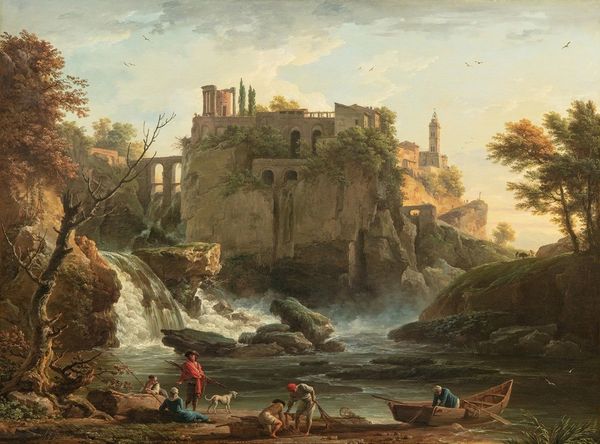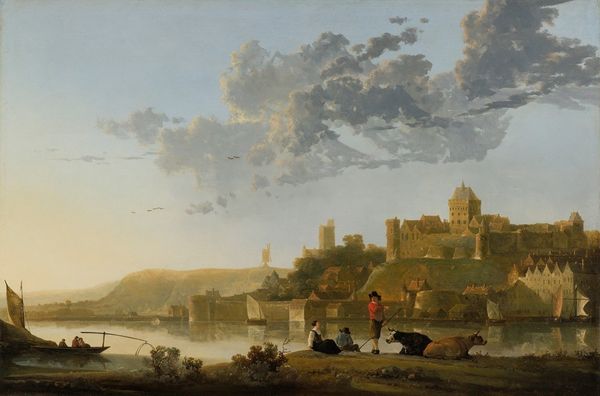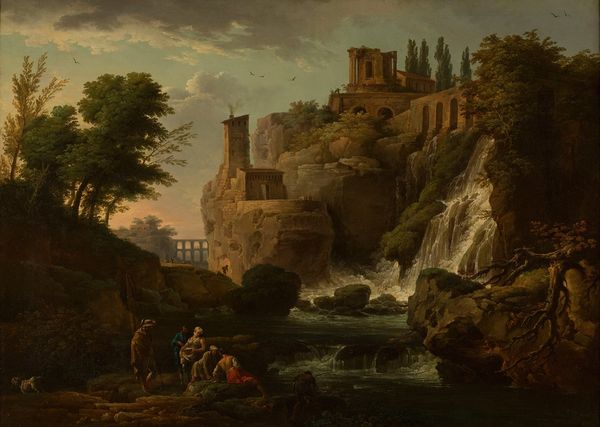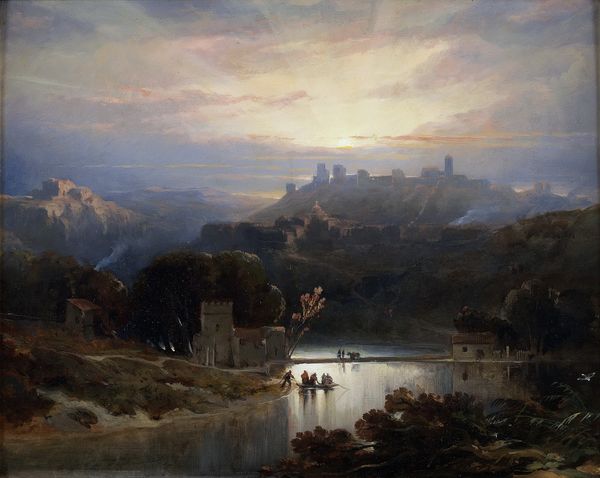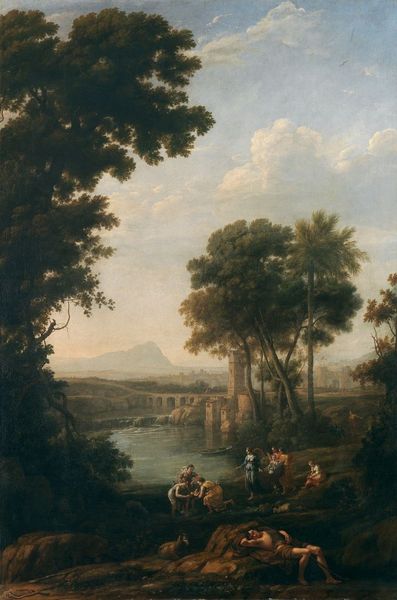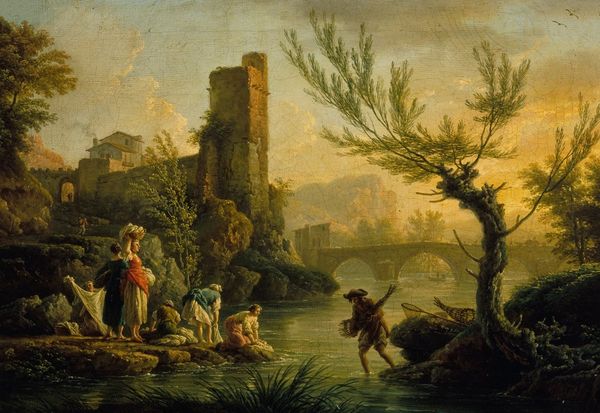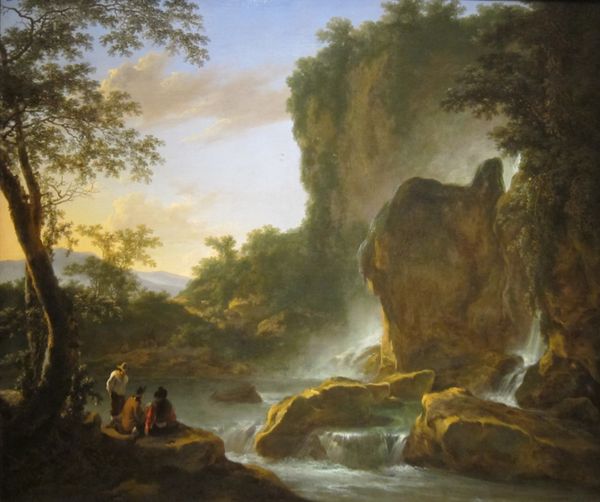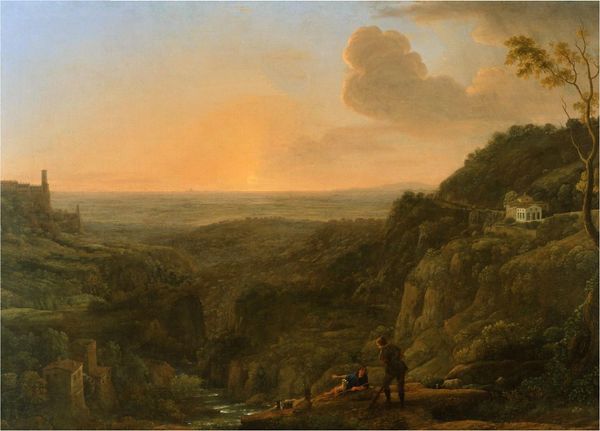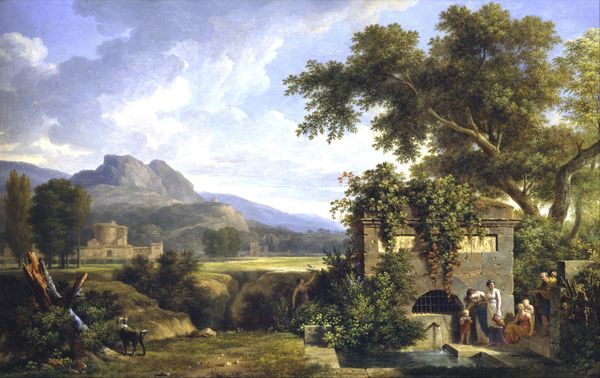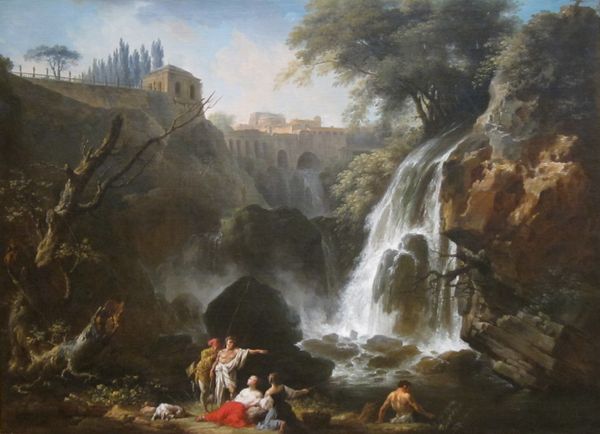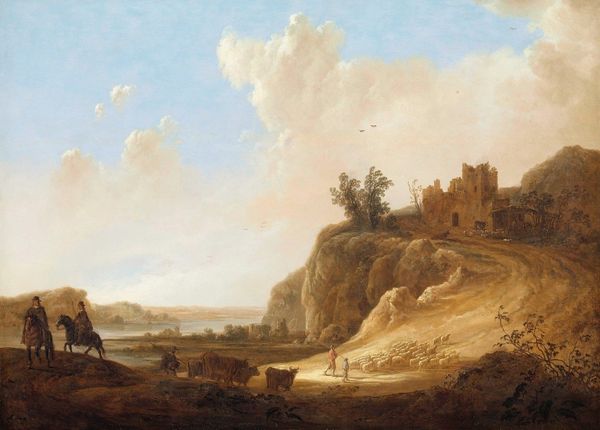
painting, oil-paint
#
baroque
#
painting
#
oil-paint
#
landscape
#
classical-realism
Copyright: Public domain
Curator: Looking at "View of Tivoli at Sunset," painted with oil on canvas, the hazy golden light immediately evokes a feeling of warmth and nostalgia. Editor: Yes, the light really grabs you, doesn’t it? I’m also struck by the scene. I imagine it involves careful manipulation of raw materials: from the grinding of pigments, the weaving and priming of canvas, through to the application of varnish—every element plays a part in the making of the image and the impact on viewers through trade. Curator: Exactly. Lorrain was meticulous about his technique, often grinding his own pigments. That level of care certainly shines through in the composition. Did you notice how he placed cattle being herded into the lower portion? That feels classically pastoral. Editor: Those pastoral scenes harken back to an idealized vision of agricultural labor. How many contemporary viewers understand this reliance on an agrarian past that never truly was or ever applied to most viewers of the painting? Think of how the pigments would have been traded in his time; consider the patrons for whom the art was produced and intended, reflecting power relationships rooted in consumption. Curator: Well, certainly that symbolism would be very recognizable, given the art traditions he would have studied and sought to evoke. The use of specific classical motifs like the cattle crossing the river evokes stability, while the ruins speak of a past civilization—the contrast brings up the cyclical nature of empires. Editor: Interesting how materials create symbolic resonance! Pigments weren't just chosen for colour, but availability and origin speak to historical trade routes—the materials were precious. Even canvas production, with its demands on resources. Consumption becomes art—and power. Curator: It is definitely a painting packed with meaning—a kind of elegy to a bygone era that has retained that emotional core. Editor: Absolutely, it invites us to consider that era not as some kind of fixed cultural reality, but a complex system of labor that’s layered across landscapes and pigments and viewers like us! I find these layers of connection rather more intriguing.
Comments
No comments
Be the first to comment and join the conversation on the ultimate creative platform.
